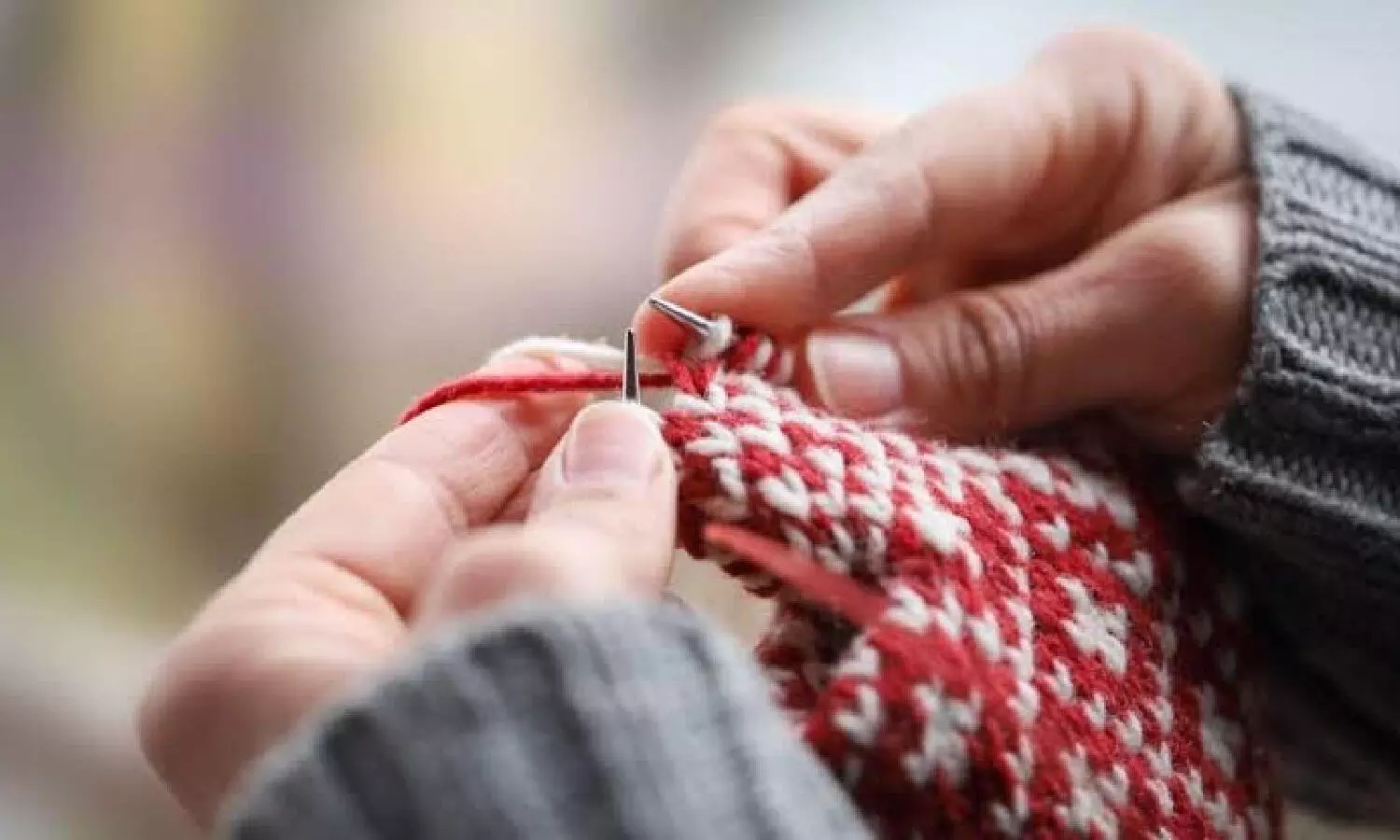Grandma Hobbies: Why Gen Z is turning to knitting, gardening and baking for mental wellness
Mental health goes old school: Knitting, baking, journaling make a comeback among Gen Z
By Anoushka Caroline Williams
Hyderabad: In an age dominated by fast-paced routines and digital overload, a quiet mental health movement is gaining momentum, one that draws inspiration from activities traditionally associated with grandmothers.
From knitting and gardening to embroidery, baking and journaling, so-called ‘grandma hobbies’ are being rediscovered by younger generations for their therapeutic benefits.
These slow, intentional pastimes are now being explored not only as sources of comfort and creativity but as tools for mental resilience and emotional grounding in stressful times.
What counts as a ‘grandma hobby’?
While the term may sound whimsical, it includes a wide range of activities that are:
• Repetitive and tactile (e.g., crocheting, weaving, gardening)
• Creative or expressive (e.g., painting, quilting, calligraphy)
• Centred around nurture (e.g., baking, preserving, journaling)
• Time-intensive and non-performative (done for joy, not for likes)
What they all share is a quality of slowness, a resistance to urgency, and a return to working with the hands.
How do grandma's hobbies help the mind and body?
‘Grandma hobbies’ typically involve repetitive, manual tasks that require attention, patience and creativity. According to Dr Nidhi Menon, a clinical psychologist based in Bengaluru, these activities act as natural mindfulness exercises.
“When we engage in tasks like crocheting or baking, our brain enters a state of focused relaxation,” she explained. “This helps reduce cortisol levels and enhances feelings of calm and accomplishment. In many ways, they work like active meditations.”
Recent studies in occupational therapy have found that crafting and other hand-based hobbies activate reward centres in the brain, providing a sense of purpose, reducing anxiety and improving mood. In some cases, these hobbies have even shown promise in managing symptoms of depression and age-related cognitive decline.
The science behind the stitches
Activities like knitting or sewing engage both hemispheres of the brain, logic and motor skills on one side, creativity and emotion on the other. According to a 2023 study by the University of Michigan, people who took up crafting during periods of chronic stress reported improved sleep, reduced anxiety and better emotional regulation.
“Working with your hands taps into deep neural patterns that promote psychological regulation,” says neuroscientist Dr Kamal Chatterjee. “There’s a tangible sense of progress, stitch by stitch, seed by seed. That physical feedback loop can be grounding in ways that digital activities often are not.”
A form of preventive care
While therapy and medication are important tools in mental health care, hobbies can act as valuable preventive strategies. For those not experiencing clinical symptoms but still dealing with stress, loneliness or burnout, grandma hobbies offer a low-cost, non-digital way to decompress.
“Modern life offers few moments of stillness,” said Dr Menon. “These hobbies create small sanctuaries of time where people can slow down, express themselves and feel present.”
A 2022 survey by the Indian Journal of Mental Health noted a significant rise in the number of young adults in urban India turning to gardening, baking or pottery post-pandemic, as a way to cope with burnout and tech fatigue.
Intergenerational values and community
Many of these hobbies also have intergenerational and cultural significance. Whether it’s following a grandmother’s pickle recipe or learning to knit from an elder, they serve as bridges across time and memory.
“These hobbies aren’t just about mental health,” noted cultural psychologist Dr Damini Rao. “They’re about identity, continuity and the healing power of tradition. In Indian households, these skills were survival tools and art forms. Reclaiming them is also a way of reconnecting with roots.”
There’s also a social dimension, community knitting circles, home baking groups and online forums where people share their progress, struggles and successes. This sense of shared purpose can combat isolation and build social connectedness, which is essential for mental health.
Making space for slower passions
Therapists recommend incorporating such hobbies into a regular routine, not as productivity goals, but as rituals of rest. Mental health coaches often advise ‘tech-free hobby hours,’ especially for people experiencing anxiety, screen fatigue or overstimulation.
“Start small,” suggested therapist and wellness coach Pia John. “You don’t need to become an expert quilter. Even 20 minutes of drawing, stitching or watering your plants after work can help you reconnect with your body and breath.”
She also warns against turning these hobbies into performance projects. “Don’t post your progress online every day. Don’t obsess over perfection. These hobbies are meant to feel freeing, not competitive.”
Mental health systems catching on
Some wellness centres and mental health clinics have begun incorporating creative hobby sessions into their recovery programs. In cities like Mumbai, Pune and Chennai, therapeutic art classes, pottery therapy and nature-based rehabilitation are gaining popularity among both patients and wellness seekers.
In rural India, traditional crafts have long served as economic and emotional anchors for communities. NGOs working in mental health are now drawing from these cultural practices to build scalable, sustainable community support models.
Slowing down to heal
In a society that prizes speed, output and multitasking, ‘grandma hobbies’ offer a rare chance to slow down. They ask for our presence, patience and care, qualities often missing in everyday life.
As India navigates rising cases of mental health concerns, from anxiety in adolescents to burnout in working professionals, these simple, quiet activities may hold the key to something essential: not just feeling better, but feeling whole.
“In the end, healing isn’t always high-tech,” said Dr Menon. “Sometimes it’s just a needle, a thread, and a little time.”